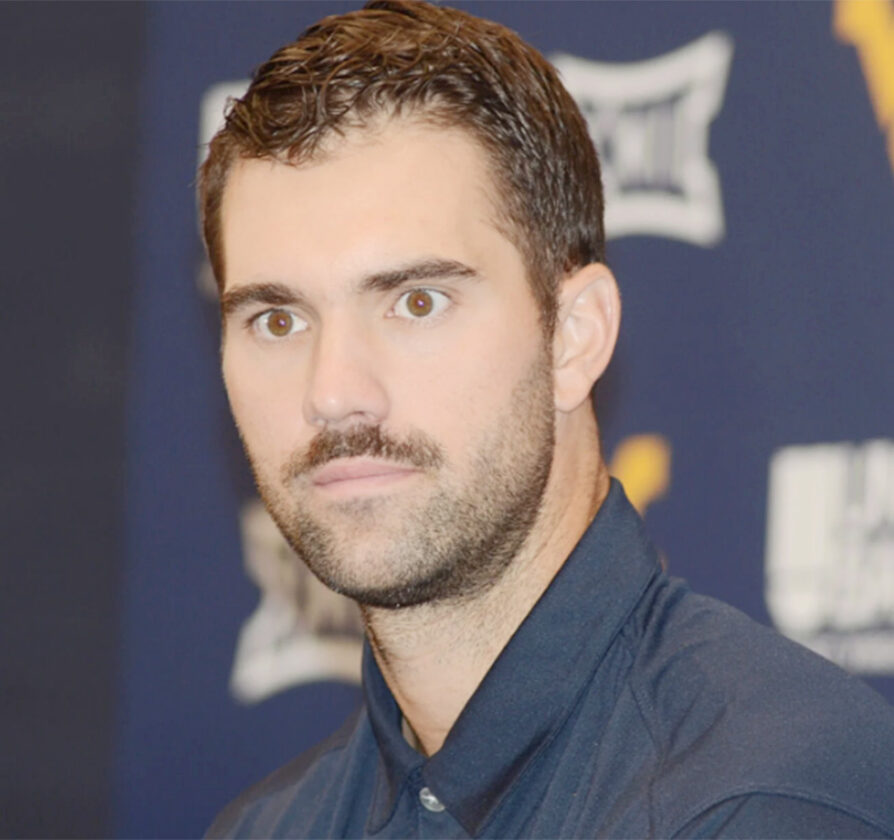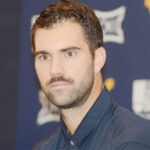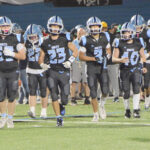Nothing can interfere with officials calling PI

File photo WVU defensive coordinator Zac Alley fields questions during a media gathering.
MORGANTOWN — There will come a moment Saturday afternoon when you are sitting in front of a television set, a beer in your hand, when either the Houston quarterback, Connor Weigman, or West Virginia quarterback, Scotty Fox Jr., will loft a pass into the Texas sky that seems to float toward a receiver going down the sideline.
The ball will arrive at the spot where both of the wide receiver’s hands come together, arms high above their heads, feet leaving the ground, pushing or tugging with one of those arms on the other, as the ball can defy gravity no longer.
The pass will fall to Earth — but not harmlessly.
For the official on the spot will take his hand and pull out one of those yellow or gold hankies that somehow have come to be called flags and toss it into the air, leaving us all in a state of suspended animation.
Pass interference, but on whom?
Guaranteed to happen.
Pass interference calls have integrated themselves into the college and professional games to the point of distraction, the right call depending not at all on what happened but on which side is viewing it.
WVU had a couple of calls against their defenders in the TCU game, as did TCU, and WVU had two called against it in the BYU game while BYU had one.
“I thought we played the ball in the air pretty well. We got a couple of PIs that were — I don’t know what pass interference is any more,” defensive coordinator Zac Alley said.
Pass interference has swelled far beyond its normal definition. You Google a definition of pass interference and you basically get this:
Defensive pass
interference
Definition: A defensive player makes contact with an eligible offensive receiver who has a chance to catch a forward pass that has already been thrown.
Key factors: The contact must happen beyond the line of scrimmage and significantly hinder the receiver’s opportunity to catch the ball. Contact must be beyond the neutral zone, and the pass must have crossed the neutral zone.
Penalty: 15 yards from the previous spot, and a first down for the offense.
Important note: If the foul occurs within the last 15 yards of the field, the penalty is enforced as a “half the distance to the goal” penalty, but not beyond the goal line.
Offensive pass
interference
Definition: An offensive player makes contact that hinders an eligible defensive receiver’s opportunity to catch a forward pass.
Key factors: This can include pushing off, a receiver running into a defender to block him (an “offensive pick”), or a player driving through a defender.
Penalty: 15 yards from the previous spot, and a first down for the defense
But it ain’t that simple, folks. Listen to Alley when asked about it this week.
“They just ‘decleated’ the guy in one of them and he ran around and here comes a touchdown. All right. I always laugh … you ask the referee what happened and they always say ‘I didn’t see it.’ They were both on the ground so I threw the flag.'”
That’s a problem right there. You can’t call it if you don’t see it, but they do.
“That happens,” Alley continued. “If you are going to play tight coverage, you are going to get some PI calls here or there. I kind of challenged our guys because we hadn’t been playing the ball. The past couple of weeks we have not been playing the ball in the air.”
That is a no-no. By definition, the ball belongs to whichever side gets it once it’s thrown into the air. You don’t play the ball, you might as well let the receivers run free in the secondary.
“I told them I’d rather see 10 PIs and six PBUs (Coach speak for Passes Broken Up) than just give up five touchdowns with them throwing the ball,” Alley said. “I felt like they took that to heart as far as being aggressive.
“They played the ball; they played through the receiver’s hands. TCU’s (receiver) Eric McAlister is a great player, and they found ways to get the ball in his hands. Two times we had a chance to pick it and dropped it and that kind of changed the game.”
McAlister had nine catches for 124 yards and a touchdown.
Pass interference is a difficult call for an official because there is so much motion and contact.
“It’s always hard, but if it’s really blatant and I believe it was pass interference, I’m on the sideline saying, ‘There’s a flag.’ But sometimes there’s bang-bang plays and now you have guys being coached to grab defenders; you watch they’ll grab them by the chest and will pull them down when they’re falling.
“I would love to know the number of offensive PIs compared to defensive PIs this year but I’d bet it’s lopsided substantially because this is an offensive game now. They let them run the ball and throw the ball on the same play.
“That’s the way it is and we’re used to it and we understand it’s a hard call because the receiver knows where he’s going and the defender doesn’t, so he has to react and play the ball in the air.”
The TCU game was a weird one for the Mountaineers, who had come in with one of the nation’s worst pass defenses. It was a statistical aberration. They had been truly bad, combining a lack of pass rush with weak coverage and the inability to tackle after the pass was completed.
But things were improved against TCU, although the football would not bounce WVU’s way.
“It was one of those rare games where we touched the ball in the air so many times and never were able to get a pick,” Alley said. “We PBU’ed six or seven of them where we had an opportunity to come away with it.
“So, I’m disappointed we didn’t get one but hopefully this week we can.”



